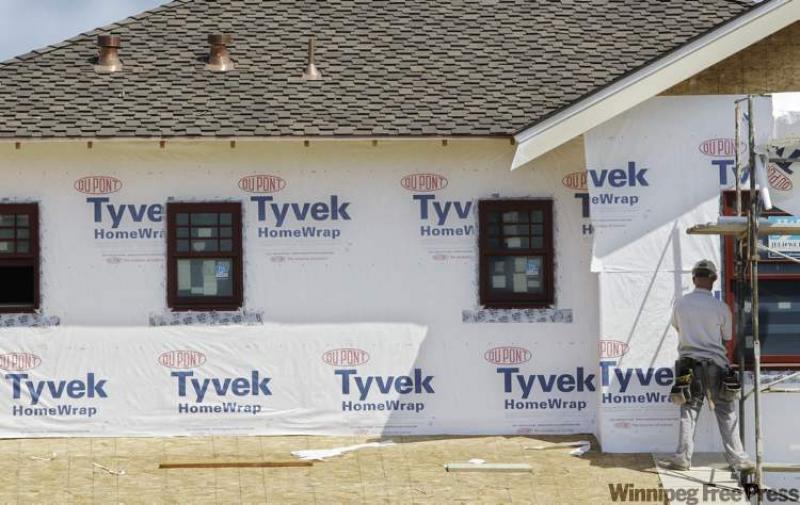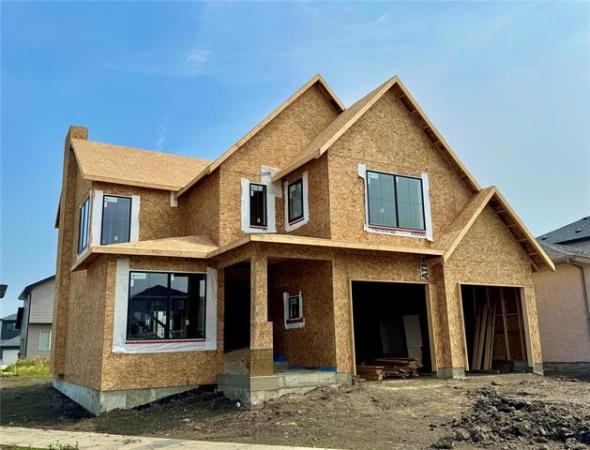QUESTION: We have a question regarding the sealing of vapour barrier in an insulated basement.
We have a four-year-old, 1600-square-foot bungalow. The builder framed the basement concrete walls with two-by-three studs, installed R12 fibreglass insulation and 6-mil poly vapour barrier. The insulation and vapour barrier extends up to the subfloor.
I have noticed that frost and ice have formed on the concrete walls behind the insulation in some areas. I assume this is due to air infiltration because of poor sealing of the vapour barrier along the joists and breaker panel. I am in the process of inspecting and sealing these areas with Tuck Tape.
Certain sections of the floor such as closets, dining and kitchen area extend out horizontally two or three feet past the basement walls and some of these extensions contain heating ducts. These extensions have vapour barrier between the subfloor and the top of the joists and are filled with fibreglass insulation. It looks like the builder who installed the basement vapour deliberately folded the poly back to leave these areas open.
My question is, should the vapour barrier be extended to seal these areas or should it be left open for air circulation?
-- Bob McKay
ANSWER: The area you are talking about is one of the most difficult to deal with in relation to installation of proper insulation and air/vapour barriers. That's because cantilevered sections of your main floor extend beyond the foundation walls, creating multiple surfaces of exterior sheathing that are exposed to outside temperature variations.
Unlike the house walls, which have a single surface exposed to the exterior, the ends and bottoms of these protrusions have to be properly insulated and air-sealed to prevent warm-air intrusion. That's why you have polyethylene air/vapour barrier installed in more than one location. It might seem to be improperly done, but it's probably correct.
If you're not seeing any moisture problems here, as with the other spots in your basement, you may not have to do anything to improve the air-sealing. If you add extra poly to seal the inside, you may actually trap moisture in the fibreglass insulation. This can cause mould growth as well as damage such as rotting or buckling of the floor sheathing. Further moisture damage could affect the floor joists, which would require major repairs.
The way to determine if there is an issue is to partially remove the loose batt insulation in a couple of these areas and inspect the wood. If you detect a strong, musty odour or see dark or white stains on the wood or evidence of mould or rot, then you may have to take action. If there is no visible moisture issue, reinstall the insulation and monitor it.
If excess-moisture issues or mould are found, a solution is at hand. The best way to insulate these areas is also the premium method for air-sealing. Filling this entire cavity (or at least a few inches on the interior of all the area exposed to the exterior of the home) with high-density blown-in polyurethane foam insulation will stop further deterioration.
Unlike fibreglass batts, this material not only provides adequate thermal insulation but is significantly impermeable to air and acts as a good air/vapour barrier.
For some reason, some homeowners with newer homes like yours have major frost and mould issues in these troublesome area while others do not. The reason is likely due to some components on the exterior of the home that are not visible, such as the housewrap or building paper. If this material is properly installed, it will breath and allow trapped moisture to evaporate out through or beneath the siding. The exterior sheathing should have small gaps between the sheets to allow the walls to "breath" and a sufficient gap behind the siding to allow moisture to escape.
The average relative humidity within the home, particularly during the heating season, will also determine whether there is a moisture problem. Finally, mechanical systems in the home such as heating and ventilation equipment can cause either a negative or positive air pressure, which also will affect warm-air intrusion into the insulation.
So, to quote an old cliché, "if it ain't broke don't fix it". If you don't have excess moisture, mould, rot or staining in these areas behind the insulation, then the systems are performing properly. If you do observe any of these, or detect strong musty odours, then repairs and re-insulating is warranted.
Ari Marantz is the owner of Trained Eye Home Inspection Ltd. and the president of the Canadian Association of Home & Property Inspectors -- Manitoba (www.cahpi.mb.ca). Questions can be emailed to the address below. Ari can be reached at (204) 291-5358 or check out his website at www.trainedeye.ca
trainedeye@iname.com




